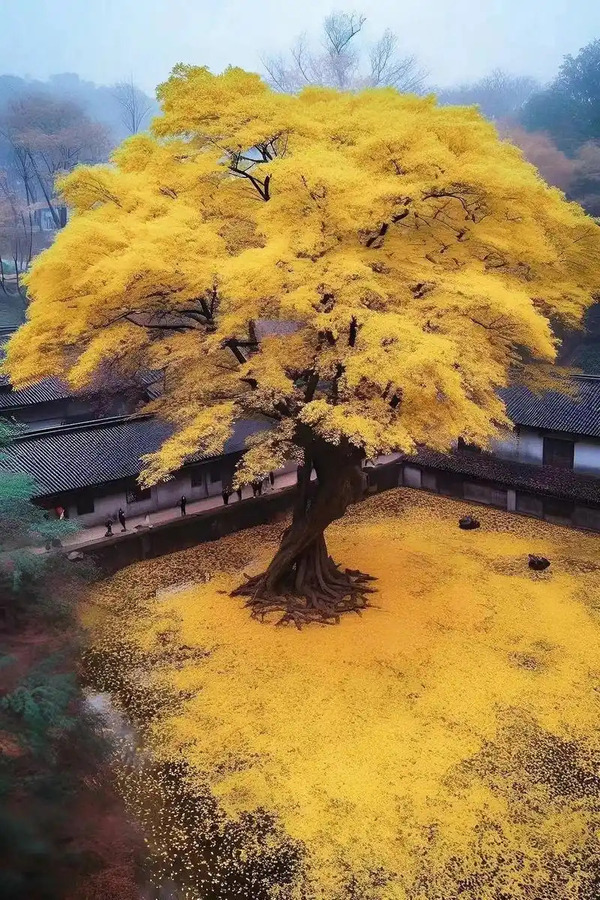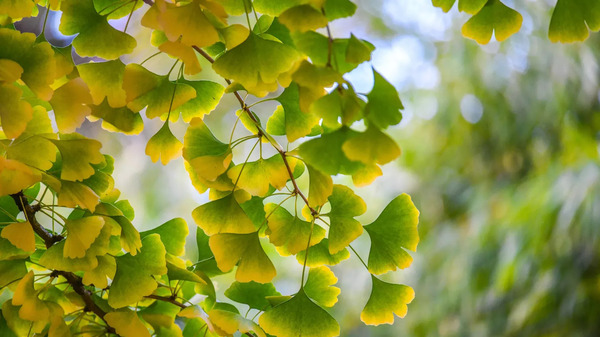If you're looking for a tree that's not only beautiful but also has an incredible backstory, look no further than the ginkgo biloba. Known as the "living fossil," the ginkgo is a tree with a fascinating history that stretches back over 200 million years. It's one of the oldest surviving species on Earth, and it’s still making an impact today. From its unique fan-shaped leaves to its role in medicine, the ginkgo is a tree that’s definitely worth getting to know.
The ginkgo is often called a “living fossil” because it’s one of the oldest tree species in the world. While many species of plants have come and gone over millions of years, the ginkgo has remained virtually unchanged since the time of the dinosaurs. It’s the last surviving member of a plant group that dates back to the Mesozoic Era—around 200 million years ago.
Despite the fact that ginkgo trees once spread across the planet, today, they are mostly found in gardens, parks, and cities around the world. Their survival is a testament to their resilience and adaptability, making them an iconic species in both natural history and modern culture.

Ginkgo trees are native to China, but they've spread across the globe and can now be found in many parts of the world. Whether you're walking through the streets of a bustling city or exploring a quiet park, chances are you might come across a ginkgo tree. Here are some places where you can see these incredible trees:
China: The ginkgo's birthplace. Some of the oldest and most famous ginkgo trees can be found in temples and ancient sites across China, like the Famen Temple in Shaanxi, where a ginkgo is said to have been planted by Emperor Taizong over 1,400 years ago.
Japan: Known for its beautiful autumn foliage, Japan also celebrates the ginkgo tree. You’ll see stunning rows of ginkgo trees lining streets in cities like Tokyo and Kyoto during the fall, when the leaves turn bright yellow.
United States: The ginkgo has made its way to North America and is a popular street tree in cities like New York, Washington D.C., and Los Angeles. Its ability to thrive in urban environments makes it a favorite for city planners.
Europe: In cities like Paris and London, ginkgo trees are planted for their beauty and resilience. They're often used as ornamental trees in public parks and private gardens.
What makes the ginkgo tree stand out from other trees? Here are a few reasons why people all over the world love it:
Incredibly Resilient: The ginkgo can survive in harsh conditions. It's resistant to pollution, pests, and disease, which makes it an ideal tree for urban environments. It's also famously known for surviving the atomic bombing of Hiroshima in 1945, with a few trees still standing in the area today.
Unique Appearance: Ginkgo trees have distinctive, fan-shaped leaves that set them apart from other trees. These leaves turn a brilliant yellow in the fall, creating a stunning display that has become iconic in many parts of the world.

Long Lifespan: Ginkgo trees can live for over 1,000 years, which is why they’re often seen as symbols of longevity and endurance in various cultures. It’s not unusual to find ginkgo trees that are hundreds or even thousands of years old, standing tall and strong.
Beyond its striking appearance, the ginkgo tree has been highly valued for its medicinal properties, especially its leaves. Ginkgo leaf extract is a popular supplement, known for its potential benefits to memory, circulation, and overall brain health. It's often used to improve cognitive function, particularly in older adults.
In traditional Chinese medicine, ginkgo seeds were used to treat a variety of ailments, from respiratory problems to urinary issues. Today, ginkgo is still a key ingredient in many health supplements and herbal remedies, making it a staple in wellness routines around the world.
The ginkgo tree isn’t just valued for its practical uses—it's also deeply symbolic in many cultures. In China, ginkgo trees are considered symbols of longevity, strength, and hope. They’re often planted near temples or in sacred places to honor ancestors and promote long life.
In Japan, ginkgo trees represent endurance and resilience. The annual transformation of their leaves into a bright yellow is seen as a beautiful reminder of the cycle of life and the passage of time.
Thinking about planting a ginkgo tree? Here’s what you need to know:
Sunlight: Ginkgo trees prefer full sunlight, so plant them in a sunny spot where they can thrive.
Soil: They adapt well to most soil types, but well-draining soil is key to their health.
Watering: Ginkgo trees are relatively drought-tolerant, but they should be watered regularly when young to help them establish strong roots.
Size: Ginkgo trees can grow quite large, up to 80 feet (24 meters) tall, so make sure you have enough space for them to reach their full potential.
The ginkgo biloba tree is more than just an ancient species—it’s a living piece of history, a symbol of resilience, and a testament to the beauty and power of nature. Whether you’re drawn to its unique appearance, its role in health and wellness, or its cultural significance, the ginkgo is a tree that continues to inspire and captivate people all over the world.
So next time you spot a ginkgo tree—whether in your local park or on your travels—take a moment to appreciate its incredible story. After all, this tree has been around for millions of years, and it's not going anywhere anytime soon!
animal tags: ginkgo-biloba
We created this article in conjunction with AI technology, then made sure it was fact-checked and edited by a Animals Top editor.